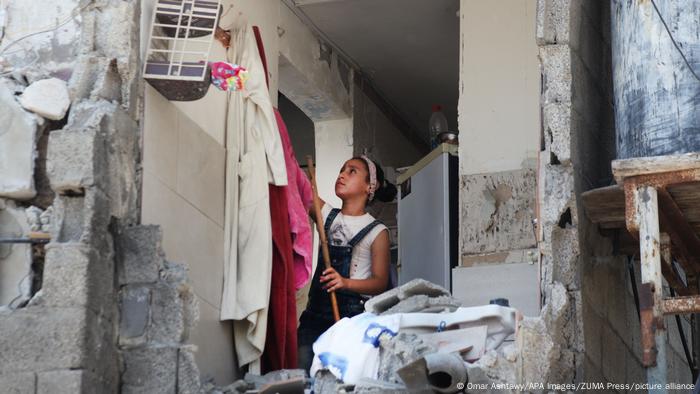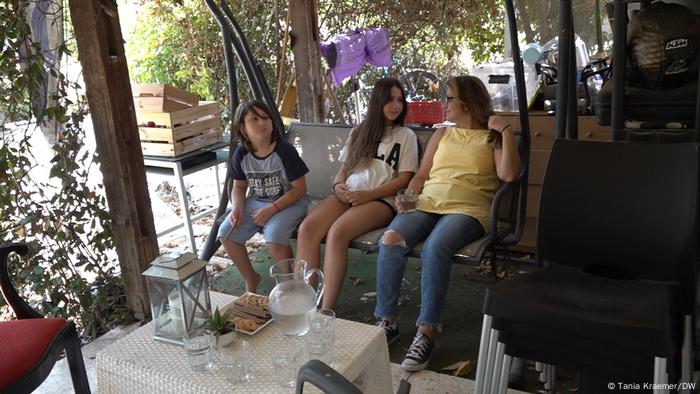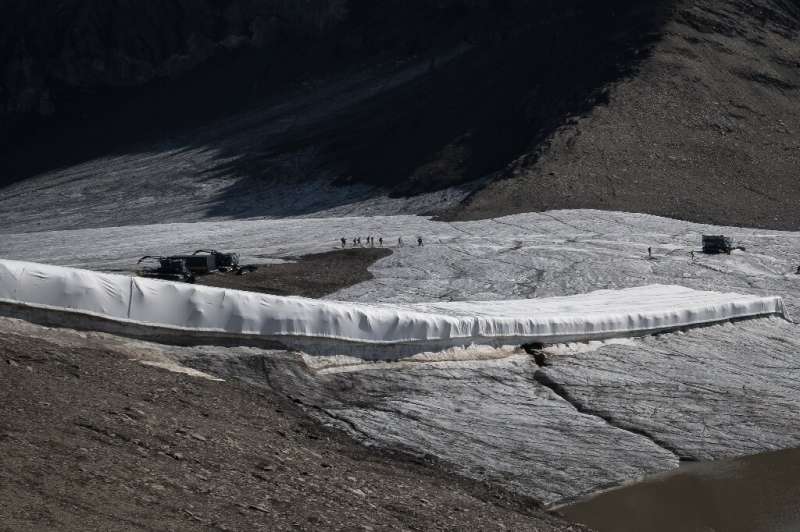ZIONIST WAR OF ETHNIC CLEANSING
Gaza and South Israel: How are people coping after the latest offensive?Residents in southern Israel and Gaza are returning to their lives. But the situation remains volatile.

In Gaza, residents emerged from three days of airstrikes and artillery fire by the Israeli military
When the Egyptian-brokered cease-fire between Israel and militant group Palestinian Islamic Jihad (PIJ) in Gaza came into effect late on Sunday night, relief set in at kibbutz Nirim in southern Israel, a few kilometers away from the Gaza Strip.
"By Sunday it got really difficult, because of the intensity, and the times between the alarms were really short," said Michal Rahav.
Together with her three children and two dogs, the 45-year-old Israeli spent three days sheltering in their safe room, a protected space in their one-story house. Sirens warning of incoming rockets or mortar shells from Gaza blared intensely. Some families had left the kibbutz at the beginning of the offensive, but Rahav and her family remained.
Standing in the safe room next to stacks of clothes and bedding, Rahav shared with DW how the family have frequently experienced similar situations in recent years. "It takes its toll. By 10 p.m. we were all agitated and we just wanted it to end."

Getting back to normal: Michal Rahav (right) and her children
Nearby, Adele Raemer walked DW around her house. "You don't get used to this. Nobody gets used to this, having zero to 10 seconds to run to a safe place," she said. She remembers when circumstances were different, such as in the 1980s, when her house was built by Gazans who came to work in Israel.
Operation Breaking Dawn
On August 5, Israel's military launched Operation Breaking Dawn with what it described as a preemptive airstrike that killed one of the PIJ's senior commanders in Gaza. Earlier the same week, Israel had received threats from the militant group after it arrested a PIJ senior leader in the occupied West Bank.
The escalation was the most serious since May 2021, when Israel and Hamas, the militant group that controls Gaza, fought an 11-day war. Israeli analysts believe that Hamas, while expressing support for PIJ, abstained from getting involved in the confrontation as they are still regrouping. On top of that, the analysts say, there is public and economic pressure not to get involved in another conflict.
In places like Nirim, people have only seconds to seek shelter
PIJ fired an estimated 1,175 rockets mainly toward Israeli communities close to Gaza, and a few toward Tel Aviv and Jerusalem. Around 200 stray rockets exploded inside Gaza, according to the Israeli military. The Israeli Defense Forces reported that the Iron Dome missile defense system had successfully intercepted 97% of PIJ's rockets.
PIJ fired an estimated 1,175 rockets mainly toward Israeli communities close to Gaza, and a few toward Tel Aviv and Jerusalem. Around 200 stray rockets exploded inside Gaza, according to the Israeli military. The Israeli Defense Forces reported that the Iron Dome missile defense system had successfully intercepted 97% of PIJ's rockets.
Growing approval for Lapid
Israel's caretaker prime minister, Yair Lapid, lauded the operation as successful and a decisive deterrent. Some analysts believe he could use it as leverage in his attempt to form the next coalition government after the election on November 2. Three opinion polls released by Israeli news channels on Monday showed his approval ratings were climbing.
"In Gaza this weekend, Lapid won the respect of many Israelis by taking the initiative instead of waiting for the other side to make a move and then respond," wrote Amir Tibon, a journalist with the Haaretz daily.
In the absence of a negotiated political solution, residents in Israel's south remain realistic. "It's not the end of it, definitely. This was a round with [Islamic] Jihad. We have a round with Hamas that's coming up sometime in the near future. It is just a plaster," said Rahav, sitting outside on her porch.
Devastation in the Gaza Strip
A few kilometers across the border in the Gaza Strip, residents emerged from three days of airstrikes and artillery fire by the Israeli military. Over three days, the military said it struck over 170 targets in the Gaza Strip.
The deep crater at the site of a bombing in the middle of his neighborhood, in Rafah in the southern Gaza Strip, was an all too familiar sight for Mohammed Shaath. Here, a targeted airstrike killed a second PIJ senior commander on Saturday night. Two militants and five civilians, including a child, were also killed.

Picking up the pieces: Residents in Gaza City are slowly recovering from the clashes
"My life is wars. In 2008, 2012, 2014, 2021, 2022. I wish our life in this city could change," said Shaath, who is 24 and unemployed. "Most houses here have corrugated metal roofs, so there was a lot of damage obviously. All these wars have affected us so much."
Mahmoud, another youth who was helping to clear the rubble, echoed that sentiment. "Our life is full of wars. Economical, social, political wars, always wars, our daily life is war," he said. He hadn't slept for the past three days, trying to comfort his younger brothers who were scared from the sound of bombing.
"I just wish to be like other youths, to live in safety and feed my family. Normal life. It's a very simple dream," the 22-year old added.
Crippling restrictions in Gaza
The Palestinian Health Ministry reported that 46 people were killed, among them militants and 16 children. That was confirmed by the The Palestinian Health Ministry reported that 46 people were killed, among them 16 children, as well as militants. Over 360 people were injured, and according to the UN-OCHA, several hundred housing units were damaged. Islamic Jihad said 12 militants had been killed.
Residents of the small territory have experienced four wars and numerous shorter military escalations since Hamas, which is designated as a terrorist group by the EU and the United States, seized power from the Palestinian Authority in 2007. Israel, and at times Egypt, have imposed a crippling closure on Gaza, limiting access to the territory via land, air and sea. This includes tight restrictions on the movement of most residents and the flow of goods.
While the rubble was being cleared once again in Gaza, Israel on Monday reopened its crossing points with the Strip and allowed the passage of fuel supplies and other humanitarian aid.
The territory's sole power plant was shut down during the conflict after it ran out of fuel on Saturday, cutting an already meager electricity supply during the summer heat. Thousands of Palestinian workers are expected to use the reopened Erez border crossing to resume work in Israel in the coming days.
"The situation of Gaza is indescribable — there are too many crises like the war a few days ago, too many losses. It is draining in all aspects," said Aya Malahi, a 24-year-old graduate in media studies from Gaza City. "There is no work. No one can create or build a future in Gaza."
Ayman Mghamis contributed reporting from Rafah and Gaza City.
Edited by: Rob Mudge


















